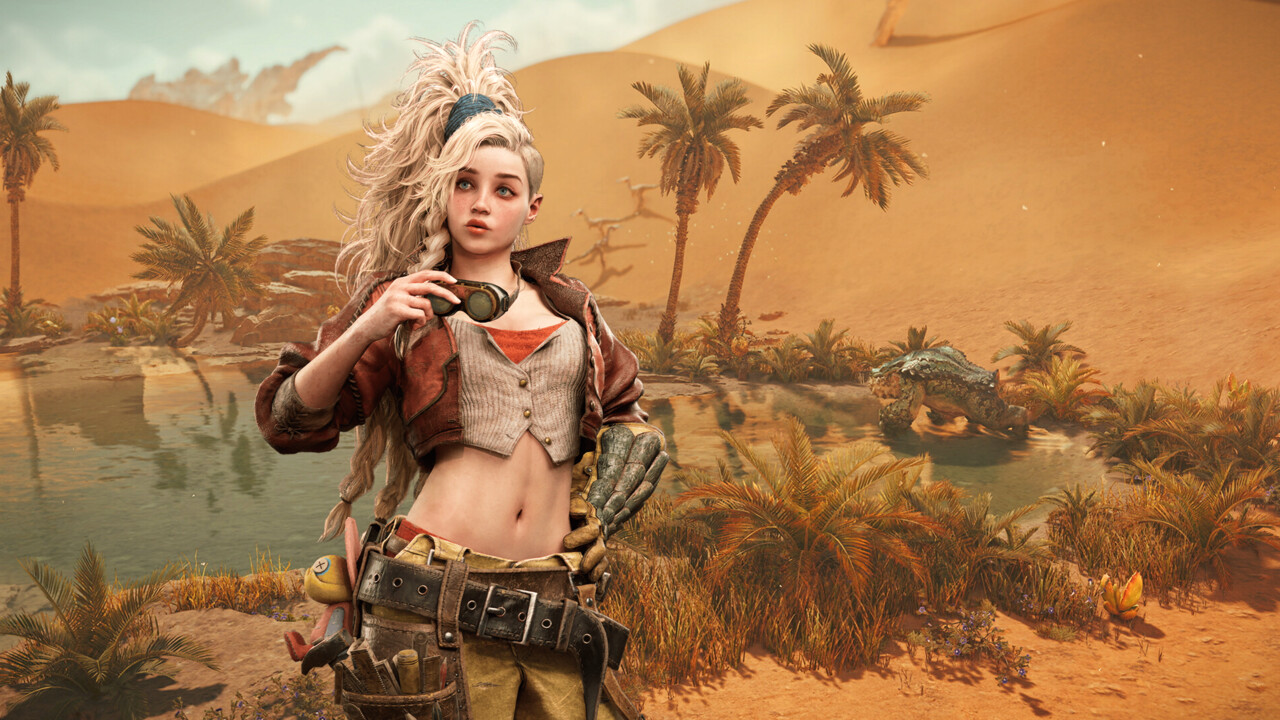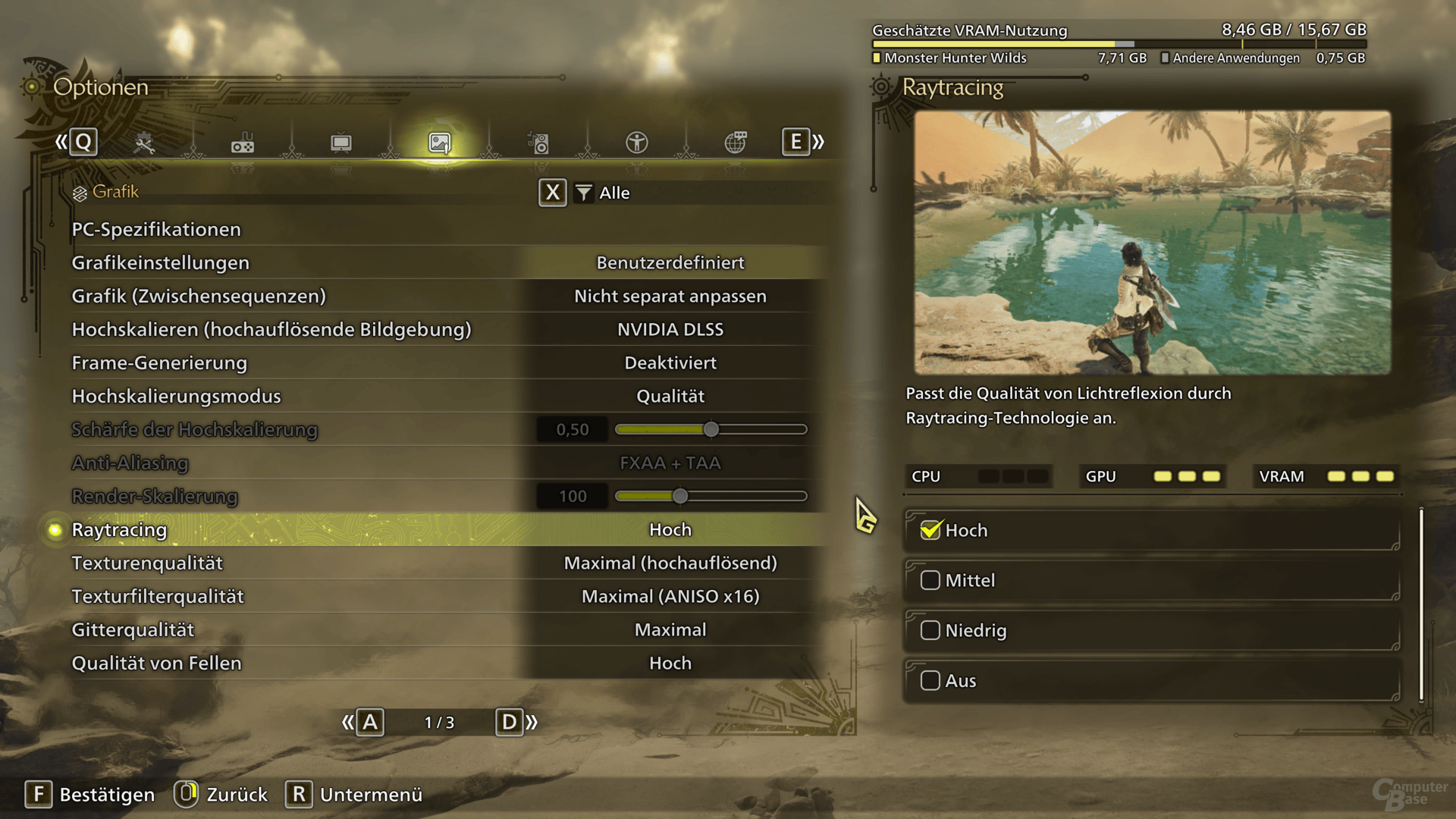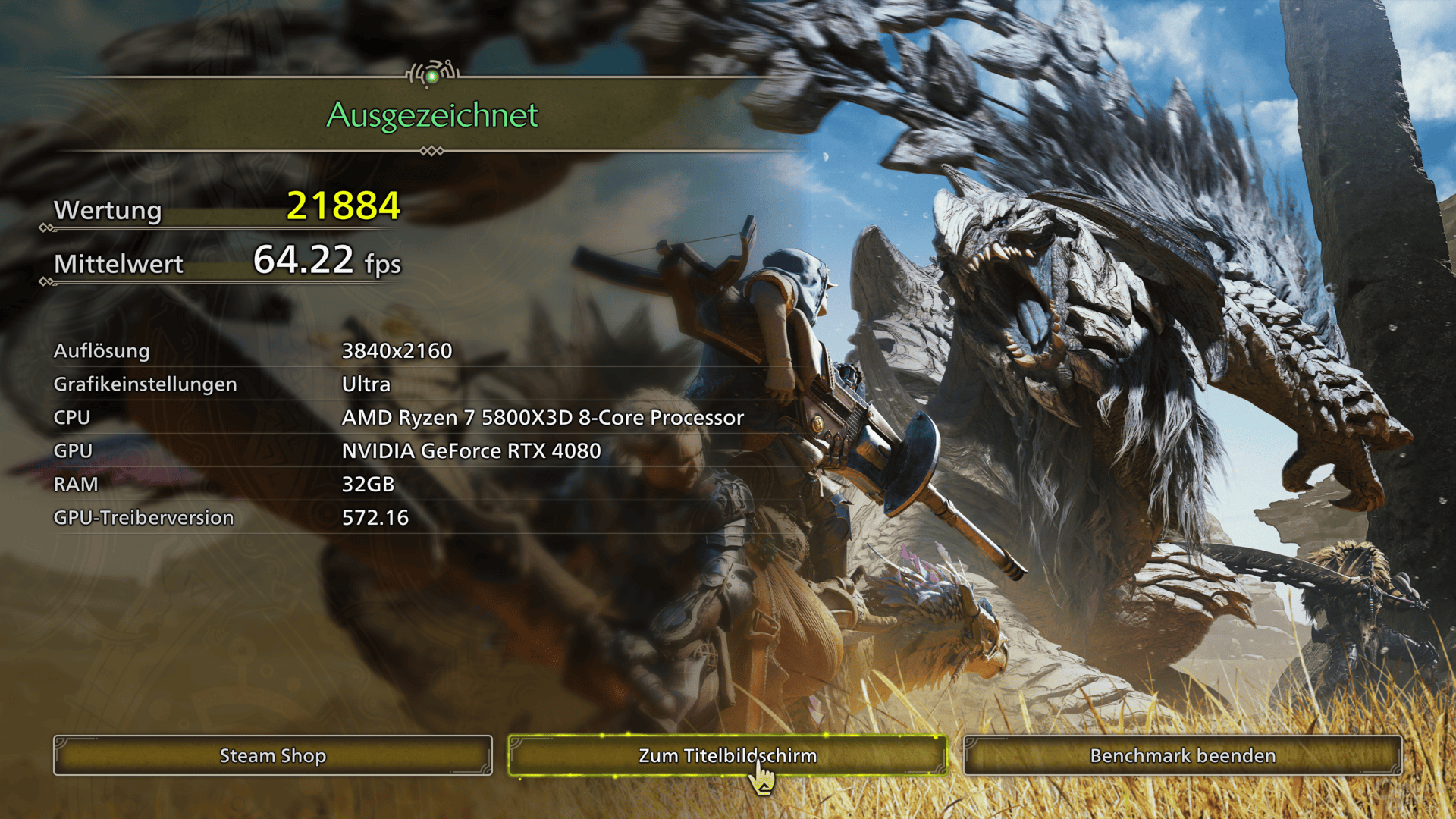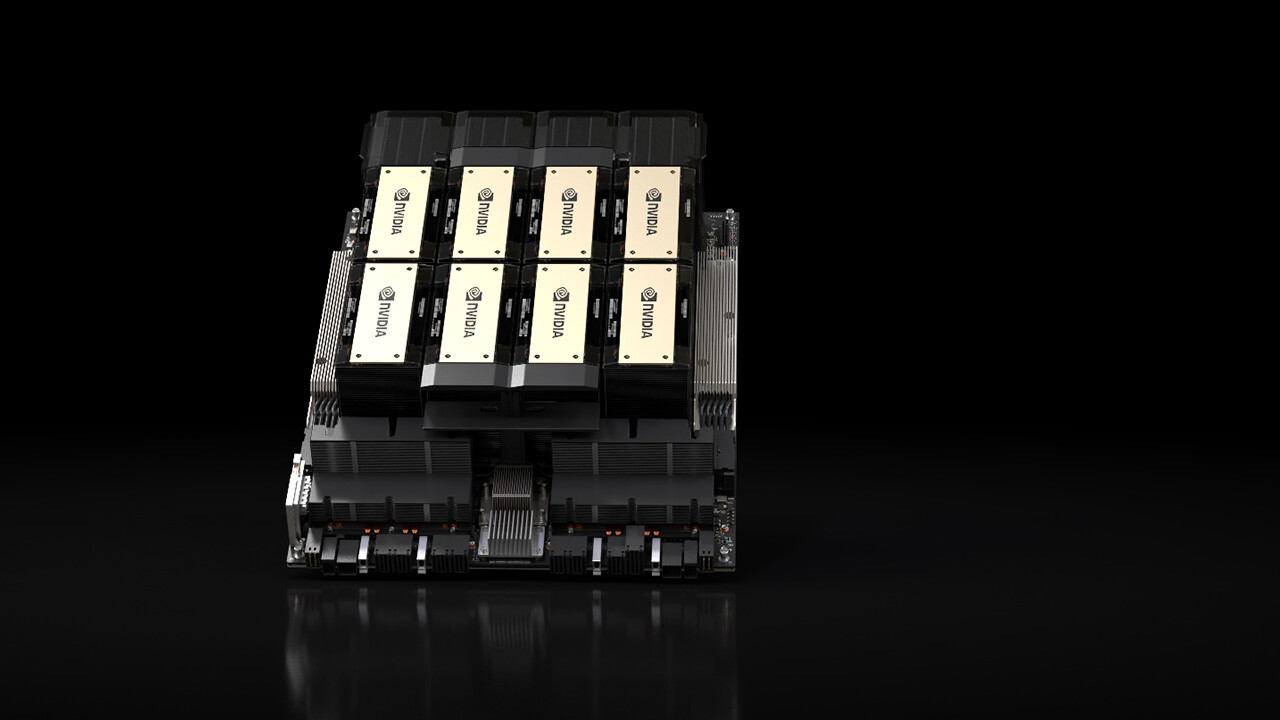Monster Hunter Wilds: Community Pursues FP in Standalone Reference 11 comments

Bild: Capcom
Monster Hunter Wilds will be released on February 28. Already now, developer Capcom is offering a free standalone reference for action role-playing games that interested players can download on Steam. This screams for a new computer-based community benchmark!
Table of Contents Community continues FPS in the standalone benchmark Monster Hunter in the community bench? Further preparations of the process in a short time the benchmark results submit the test results of the community benchmarks in the full benchmarks of HD (16:9) in the WQHD benchmarks (16:9) in the UWQHD benchmarks (21:9) in UHD (16:9)
Monster Hunter Wilds Im Community-Benchmark
With Monster Hunter Wilds, in three weeks after the fact of Monster Hunter World in 2018, the sixth full part of the series is due. It is not surprising that this is another action role-playing game in a third-person perspective, which can preferably be played in the online cooperative. Wilds will be released for PlayStation 5, Xbox Series X | S and PC, on Steam in three editions from 70 to 110 euros.
After two open beta events, fans and other interested players now have the opportunity to try Monster Hunter Wilds before release – this time not the gameplay or the character editor, but Capcoms’ own engine. According to the developer, a large standalone benchmark of 29 GB does not represent the final stand, but should be very close to version 1.0 and, therefore, gives a good impression of performance. In addition to Raytracing, the enhancement is also available through NVIDIA DLSS 3.7.10, AMD FSR 3.1.3 and Intel Xess 1.3.1. There is also DLSS and FSR frame generation.
With the possibility of being able to put the game currently on Steam most frequently in advance and for free an integrated benchmark, one format is particularly important: It is time for a new community benchmark, in which player benchmarks and diagrams can bring to Computer Base – and can be checked for the first time how many GeForce RTX 5090 (test) are really on the road to the community…
What is tested?
As usual, it is necessary to agree on the specified benchmark test series in advance in order to be able to collect resilient and extensive results for concrete graphics settings. For Monster Hunter Wilds, the editorial team committed to the following four setups.
The set of four tests for the community benchmark resolution VSYNC resolution Graphics details 1920 × 1080 (16:9) From default “Medium”, DLSS / FSR / XESS: DLAA / Native AA
“Raytracing”, “Frame Generation” disables 2,560 × 1,440 (16:9) by default “Ultra”, DLSS/FSR/XESS: Quality
“Raytracing “High”, frame generation” disables 3,440 × 1,440 (21:9) 3,840 × 2,160 (16:9) “Display” screen mode: window without rising, aspect ratio: automatic,
NVIDIA Reflex Low Wool Mode: Disabled
In WQHD, UWQHD and UHD resolutions, the graphics settings are identical: it is important to select the highest “ultra” preset, manually set the ray tracing to the highest “high” level, then enable the quality of choice. So that players with weaker or older hardware can also participate in the community benchmark and because scaling with the low pixel count in Full HD can be difficult anyway, there is also a series of benchmark tests without any ray tracing and with the graphics preset “Medium”, used in DLS, FSR or XESS natively without scaling.
Frame generation is always turned off so that we can ensure consistent results between GPU generations. Also, as usual, one must ensure that V-Sync or Frame-Limiter is turned off using a driver.
 Monster Hunter Wilds: Graphics settings for WQHD, UWQHD and UHD
Monster Hunter Wilds: Graphics settings for WQHD, UWQHD and UHD
Other preparations
As usual, it is also important to ensure that VSYNC and FPS-Limiter are not active, neither in-game nor on the driver. The standalone reference to Monster Hunter Wilds should also be reproduced in exclusive full-screen mode. Participants should also ensure that they have installed the correct graphics driver. No one is explicitly optimized for Monster Hunter Wilds yet, but the editorial team is still advised for comparability with the latest versions currently:
AMD Radeon: Adrenaline 25.1.1nvidia Geforce: GeForce 572.16 INTEL ARC: 6262
For simplicity, the community test takes place with the reference integrated into the reference tool. In this way, the heavy manipulation of women with backups and external reference tools can be removed. After the full six-minute benchmark sequence expires, Monster Hunter Wilds switches to a results screen where one score is listed over the other. The only context in the context of this community reference is the average FPS achieved, which are being produced as “average”!
 Monster Hunter Wilds: The result displays with average FPS
Monster Hunter Wilds: The result displays with average FPS
The process in a nutshell
The Monster Hunter Wilds benchmark load on steam. Update the graphics driver and restart the PC. In the “Window without Edges” options, the desired resolution and appropriate graphics settings. DLAA / native AA), otherwise in the quality profile. Raytracing is still off.
Submit benchmark results
The determined measured values must also be sent for this reader test using the following form. If the form is submitted, the CMS automatically creates a contribution in the comment thread for this article. Participants can add more information here, but required outside of the pre-form area – which is automatically evaluated by the CMS. Only when the contribution is saved are the computer base values visible.
It is important to pay attention to the correct name, which, in any case, must always contain information about the GPU and CPU. The information should be made like the following list and benchmarks already available – this increases clarity enormously. Ideally, the comments created can be supplemented with screenshots of the benchmark results.
RTX 4070 Ti S, 7800x3drx 7800 XT (OC), 5600xarc B580 (150W), 14700K (UV)
With GPU and CPU it can be indicated whether the chip has been overclocked (OC) or the voltage has been reduced (UV). GPUs should also be mentioned if it is a mobile chip (max q = mq, mobile = m, optimally reduced by specifying TGP) or power consumption. In this case, the difference between the reference and the custom design is not made. Memory information is also not necessary and is not taken into account.
The form does not have to be completely filled out and selected results can also be reported. Other measured values can be added later by resubmitting the form.
Community testing results
The results of the community tests are gradually verified by the editorial team, then included in the reference diagrams. The orange entry in the diagrams linked to the respective forum post. If there is no link, it is the result of the editorial team.
Benchmarks in full HD (16:9)
Benchmarks in WQHD (16:9)
Benchmarks in UWQHD (21:9)
Benchmarks in UHD (16:9)
The entire editorial team would like to thank all the participants in the run-up to this campaign. Happy benchmarking!
Was this article interesting, useful or both? The editorial team welcomes any support from Techoutil Pro and disabled ad blockers. Learn more on the subject of computer based screens.
Topics: Community Community Benchmark Gaming Graphics Cards

An engineer by training, Alexandre shares his knowledge on GPU performance for gaming and creation.


